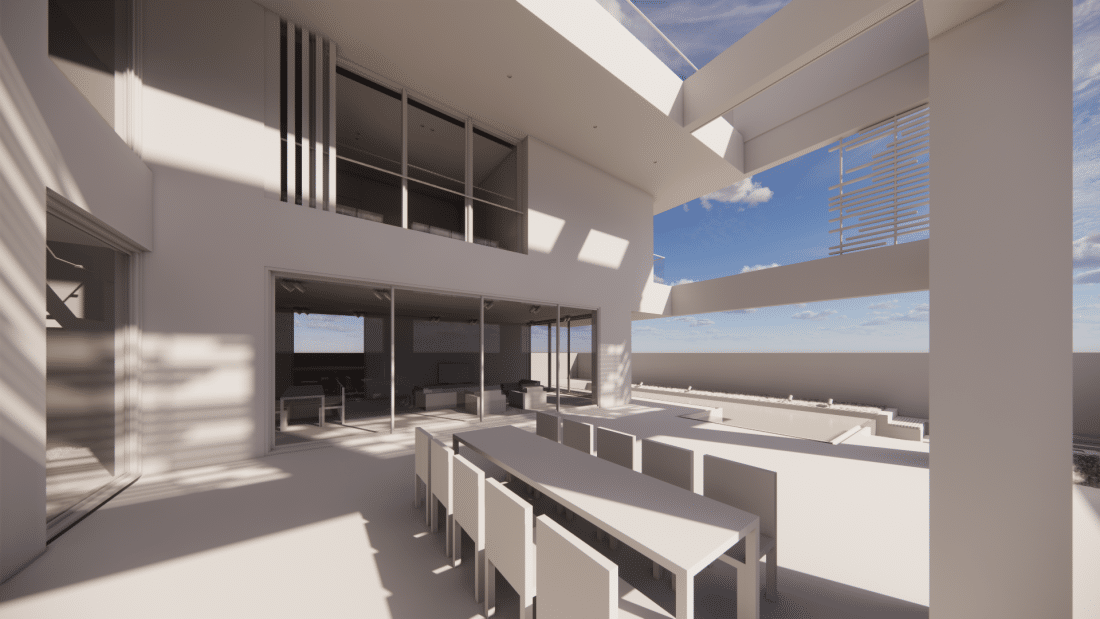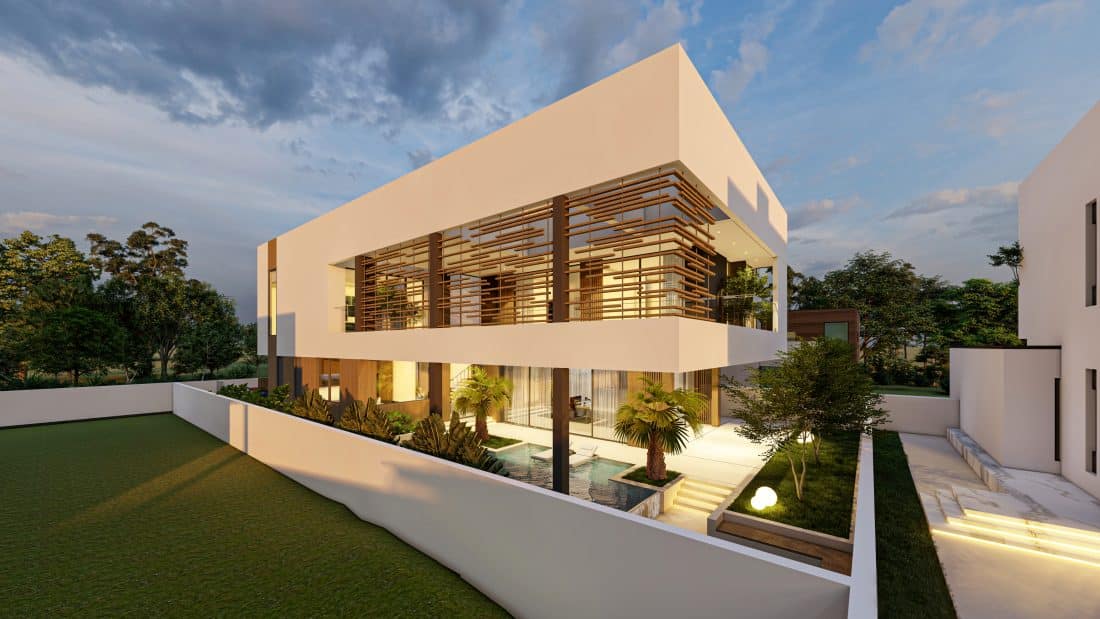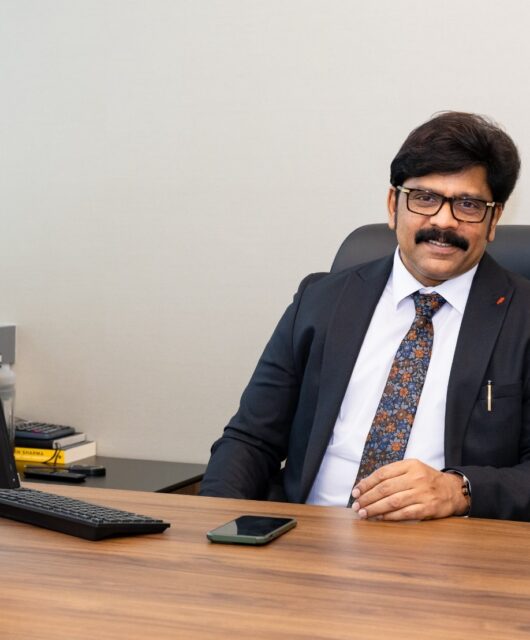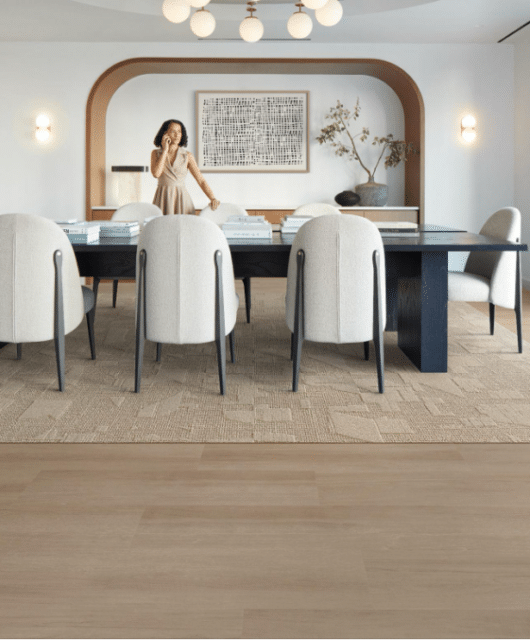
Jens Otterstedt, general manager, Al Masaood Bergum, speaks to Jochebed Menon about the division’s carbon-negative solution for the region’s building industry.
Jens Otterstedt has been fascinated by wood for as long as he can remember. He is a construction industry veteran with a Master’s degree in carpentry and over 35 years of experience in construction, design, and factory management. Otterstedt is also passionate about the environment, and it is this zeal that is pushing transformation at Al Masaood Bergum. (AMB). The division is one of the UAE’s leading modular and prefabricated building solutions providers.
Founded in 1978, under the Al Masaood Group of Companies, AMB manufacture and deliver high-quality modular and panellised building systems for numerous industries from oil, gas and energy to defence and military, leisure, and hospitality. Under Otterstedt’s leadership, AMB is transitioning towards innovative and smart building solutions that are not just efficient which results in lower costs and faster occupancy but are sustainable and environmentally friendly as well. A succession of key investments in cross-laminated timber solutions has been launched in the region.

Environment-friendly construction
“Sustainable construction solutions are the need of the hour. Concrete is one of the biggest contributors to carbon emissions on the planet,” says Otterstedt. “We need to move to a sustainable option, and cross laminated timber (CLT) is the perfect solution.” He adds: “I come from Germany and have worked with CLT most of my life, including a stint in Canada where I set up a large CLT prefabrication factory. I am passionate about wood and wood construction and am introducing the concept here. The team and I are implementing CLT in modular construction and prefabrication using modern technology at AMB.” Otterstedt is sure that environmentally friendly constructions are the way to go, and CLT panels are the appropriate solution. AMB is in the process of obtaining government approvals and regulating this innovative construction method. Cross-laminated timber is commonly used in Europe, the US and Australia as a primary construction material. In fact, many of these countries have high-rises made from CLT as it is extremely environmentally friendly. He says: “Wood is a carbon binder – which means CLTs absorb carbon from its surrounding. So instead of being a carbon positive structure, that for example emits 2,000 tonnes of carbon, a CLT building absorbs the same amount of carbon and traps it in the panels. If everyone shifts to wood constructions tomorrow, we can possibly stop global warming on this planet.”
Zero waste
Furthermore, CLTs produce close to zero waste and the entire structure is premade at the factory and then assembled at the site. Otterstedt reveals that CTLs are perfectly suitable for this climate. It has been used in extreme climate conditions from -50 to 50 °C in northern Russia and the west coast of Australia. “We are not reinventing the wheel; we’re just bringing the same concept to the Middle East. Of course, we’ll need to work on the supply chain and replanting of trees and forests management and take it from there,” he adds. He believes that localisation is crucial, especially with the prices of timber soaring and supply chain issues plaguing the industry. “Maybe the ghaf tree which we have here can be a solution. If it can be harvested under the right circumstances, we can have a flourishing business here that not only solves the supply issue but also reduce carbon in the region. We can create acres of ghaf tree forests and sustainably harvest them. It is possible,” he says.

Finding a breakthrough
It’s been a little over eight months since Otterstedt has taken over the reins at AMB and has met with slight resistance from the industry. “There’s a big concrete lobby in the country and with 99% of the buildings made from concrete due to the lack of other options in the market, we’re faced with certain setbacks. We’re trying to change that mindset and educate the industry of this sustainable option.” Otterstedt and his team have visited regional government entities and developers to educate them on the benefits of CLT, which include sustainability and time-saving solutions. “The key benefit, for especially for developers, with CLT is that it is massively time saving. Compared to a concrete building, a CLT structure takes less than half of the time to complete construction. Other advantages include close to zero waste and energy efficient,” he reveals.
To ensure CLT meets local regulations and fire safety standards, AMB is doing a burning test with Thomas Bell-Wright International Consultants. What makes CLT a success in the construction industry is its low flammability. Otterstedt explains: “Each CLT panel is made up of multiple layers of timber that are glued together. Depending on the requirement, the thickness of each panel can go from 90mm to 160mm – which are four to seven layers of timber glued together. Let’s say there’s a fire, when the first layer burns, the ash along with the glue works as a fire retardant to stop the fire. Most of the structure remains untouched. This has been tested multiple times in Europe and the US.” Otterstedt and his team are eager to get started on their journey toward sustainable construction practices. He is certain that the country’s developers will use sustainable materials for their projects following the UAE’s Sustainable Development Goals.







